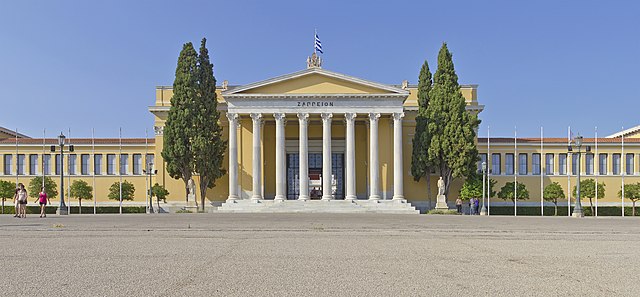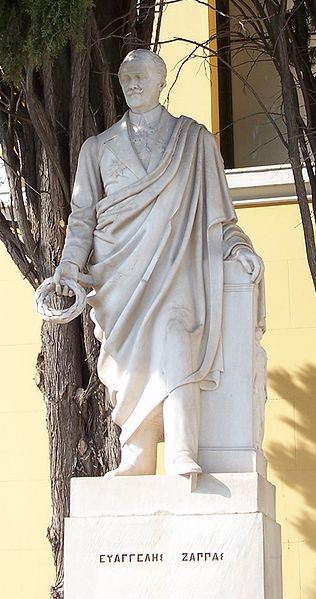Evangelos or Evangelis Zappas 23 August 1800 – 19 June 1865) was a Greek patriot, philanthropist and businessman who spent most of his life in Romania. He is recognized today as one of the founders of the modern Olympic Games, which were held in 1859, 1870, 1875, and 1888 and preceded the Olympic Games that came under the auspices of the International Olympic Committee. These Games, known at the time simply as Olympics, came before the founding of the International Olympic Committee itself. The legacy of Zappas, as well as the legacy of his cousin Konstantinos, was also used to fund the Olympic Games of 1896.
An 1860 portrait of Zappas
Panoramic view of the Panathenaic Stadium (1906).
Zappeion exhibition center.
Statue of Zappas in front of the Zappeion (made by Ioannis Kossos).
The modern Olympic Games or Olympics are the leading international sporting events featuring summer and winter sports competitions in which thousands of athletes from around the world participate in a variety of competitions. The Olympic Games are considered the world's foremost sports competition with more than 200 teams, representing sovereign states and territories participating; by default the Games generally substitute for any World Championships the year in which they take place. The Olympic Games are held every four years; since 1994, they have been alternated between the Summer and Winter Olympics every two years during the four-year period.
The Ancient Olympic Games stadium in Olympia, Greece
Pierre de Coubertin, co-founder of the International Olympic Committee and its second president
Evangelos Zappas, co-founder of the International Olympic Committee
The opening ceremony of the 1896 Summer Olympics in Panathinaiko Stadium in Athens







